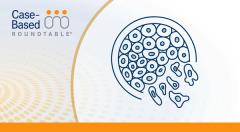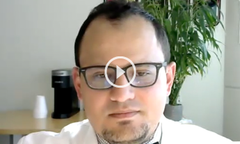
Patient Selection Factors for Earlier Use of CAR T-Cell Therapy
Binod Dhakal, MD, MS, discusses selecting patients for chimeric antigen receptor T-cell therapy by considering each patient’s condition and logistics.
Episodes in this series

Binod Dhakal, MD, MS, assistant professor of medicine in the Division of Hematology and Oncology at the Medical College of Wisconsin, discusses selecting patients for chimeric antigen receptor (CAR) T-cell therapy by considering each patient’s condition and logistics.
Ciltacabtagene autoleucel (cilta-cel; Carvytki), a CAR T-cell therapy, was approved for patients with relapsed/refractory multiple myeloma who have been treated with at least 1 prior line of therapy based on the CARTITUDE-4 study (NCT04181827), whereas it was previously approved for patients after 5 lines. Before CAR T-cell therapy can be initiated, T cell collection and lymphodepletion, potentially causing delays. After treatment, patients still need to be monitored for CAR T-cell–related toxicities including cytokine release syndrome (CRS) and immune effector cell–associated neurotoxicity syndrome (ICANS) afterward.
Dhakal says that in the late relapse setting, CAR T-cell therapy is the only highly effective treatment available to patients, and delays can harm patients. However, in the earlier setting opened by this approval, patients still have other options and can afford to wait before initiating cilta-cel.
He added that in CARTITUDE-4, CAR T-cell–related adverse events (AEs) were lower in occurrence and severity than when it was investigated in more heavily pretreated patients in CARTITUDE-1 (NCT03548207). With this in mind, he suggested considering the patient’s performance status, the time of relapse and number of prior therapies, and caregiver support to ensure patients can be monitored after treatment easily. Although Dhakal believes most patients could benefit, not all meet these criteria. Nevertheless, making cilta-cel available earlier in the course of treatment can benefit patients who are eligible for CAR T-cell therapy.
Transcription:
0:08 | Once you get the CAR [T-cell therapy], there are definitely some short-term and long-term, what we call CAR [T-cell therapy]–related toxicities that we have to monitor. So I think there is a requirement to monitor afterwards as well. It's not that when you get the CAR T-cell therapy you're done. So I think when you choose a patient...you have to think about...all these aspects. For example, when the patients are in late relapses, I think what happens is they don't have a lot of options. And so when you think of the CAR [T-cell therapy]...that is the one treatment that is only effective treatment that is available now. In the second line and beyond, I think the good thing is that they are still early on, they could still try other options. And so there is an opportunity for the patient to wait for about a couple of months easily while getting the CAR [T-cell therapy] afterwards. So I mean to say that the urgency to get the CAR [T-cell therapy] is not that immediate. In the majority of the patients, they can wait.
1:08 | What we also saw in CARTITUDE-4 is that if you give it, CAR [T-cell therapy]–related AEs, when you compare to CARTITUDE-1, were lower, like CRS, ICANS, the other related neurotoxicities, etc. Both rates and severity were lower. So that means if you're giving the CAR T at an earlier line, which...is dictated by the disease burden in that setting, I think the CAR [T-cell therapy]–related AEs can go down. So I think when you offer this treatment, you have to make sure how the patient's disease is, how they are relapsing, what is the patient's overall condition, the performance status, and then at the same time…it's important to have that monitoring from the caregiver as well after they receive the CAR [T-cell therapy]. All these things will help in deciding the right patients to get this therapy. Ideally, I would like to give it to all patients, but not all patients will fit the criteria. But moving this earlier than later, I think the majority the patients will be able to get this [rather] than when they are at the later stages.
Transcription created with AI and edited for clarity.












































